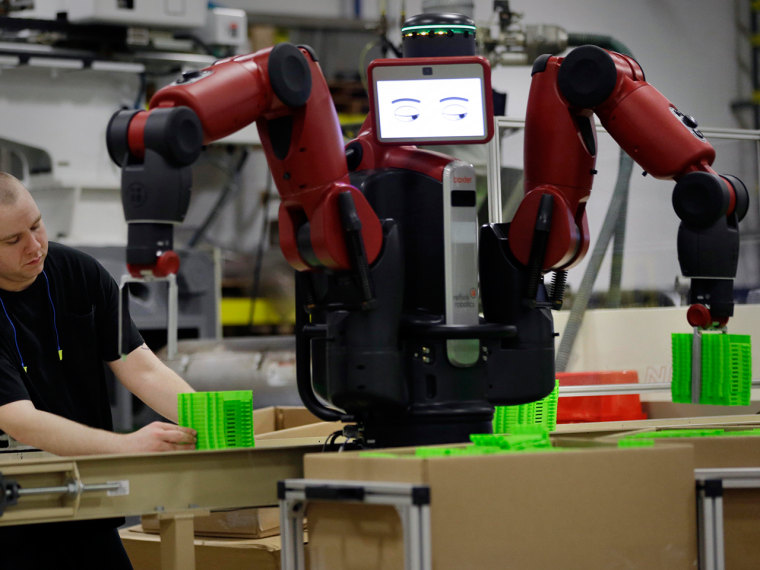Humans, most of us anyway, can move a coffee cup without spilling the liquid inside. But such delicate tasks — how to balance a plateful of food, or how to place an egg crate in the fridge without smashing the contents — are, bizarrely, hard lessons to teach a robot.
A new training technique being perfected at Cornell University will let regular humans easily train household robots to perform delicate or dangerous tasks by simply guiding their arms. Recently, the researchers trained a robot as a checkout clerk, and taught it not to harm a person standing nearby when it rang up a pointy object, a knife.
"Many of the tasks that look simple to us are hard for robots," Ashuthosh Saxena, associate professor of computer science at Cornell University, told NBC News. "Not being clumsy, which most robots are, is a hard problem [to solve]" and a hard thing to teach, he said.
Today, most robots learn their moves from experts. They can be commanded by pre-written programming — which may not be universal for all actions — or trained to copy movements after watching precise expert demonstrations.
But Saxena's learning technique will let future folks at home train their household helper robot without perfect instructions. When a person moves its arm with the knife shaft pointed away from the person standing in front of it, the bot gets the message. Then robot then displays movement options on a screen, so the user can continue to refine the command by sight.
"When it arrives at the house, people will be able to give feedback to say: 'I like this, or I don’t like this,'" Saxena said. Hey robot! Don't walk in front of the TV when it's on. Don't overturn the plate that's holding the pizza slices. (But it's OK to hold an empty plate upside down!) Safety lessons about how to put away knives, as the research team demonstrated in a recent YouTube video, go on the list as well. The work is due to be presented at the Neural Information Processing Systems conference in Lake Tahoe this December.
"Don't harm the human." Asimov's first law may be simple enough for us to understand, but a hard one to teach robots. Saxena's work could help to change that. Guess it's time to bring on the salad-chopping robots?
Nidhi Subbaraman writes about technology and science. You can follow her on Facebook, Twitter and Google+.
